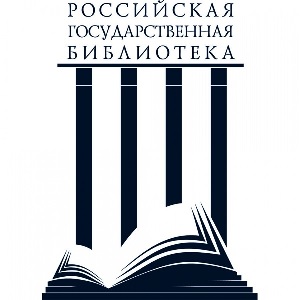ТЕОРЕТИЧЕСКОЕ ОБОСНОВАНИЕ ИСПОЛЬЗОВАНИЯ МЕТОДА КЛАСТЕРИЗАЦИИ В БАНКОВСКОМ РЕЗЕРВИРОВАНИИ
Аннотация
Научное исследование посвящено изучению метода кластеризации и его применению в банковском деле в сфере управления рисками. В настоящее время для выделения групп ссуд по уровню риска используется метод классификации, при котором классификационные группы выделяет регулятор (Банк России). Отнесение ссуды к той или иной группе производится на основании анализа двух критериев (финансового положения заёмщика и качества обслуживания долга), что подвергается критике, поскольку не учитывает множество дополнительных факторов. Принятием решения о конкретной ставке резервирования занимается компетентный сотрудник на уровне коммерческого банка, что содержит в себе субъективный компонент. В дальнейшем регулятор может быть не согласен с суммой созданного резерва, что влечёт за собой выдачу предписаний о доначислении резервов и может нарушить нормативы и, в целом, устойчивость кредитной организации. Таким образом, существующая система резервирования в банке обладает рядом существенных недостатков и требует пересмотра. Для повышения уровня объективности предлагается использовать метод кластеризации на основе интеллектуального анализа данных, который позволит выявлять новые закономерности в группировке ссуд по уровню риска. В работе предлагается замена стадии классификации в процессе создания резервов на возможные потери по ссудам на стадию кластеризации. Основными результатами такого преобразования станут: выделение новых групп ссуд (кластеров) по схожим признакам, замена экспертного мнения на интеллектуальный анализ данных, автоматизация и упрощение процедуры создания резервов. Побочными эффектами от внедрения процедуры кластеризации станут повышение финансовой устойчивости и снижение риска отзыва лицензии.
Литература
Regulation of the Bank of Russia N 590-P of 28.06.2017 (as amended on 16.10.2019). (in Russian).
Berdyshev A.V. On the conditions for the development of banks in the digital economy. Global economy configuration problems of the twenty-first century: the socio-economic idea of progress and possible interpretations. Collection of scientific articles. Volume two. Krasnodar. 2018. 395 p. (in Russian).
Bibikova E.A., Valinurova A.A., Tretyakova Yu.S. Evaluation of the innovative banking product implementation. Ivecofin. 2019. N. 1(39). Р.3-10. (in Russian).
Valinurova A.A., Danilova S.V. A new approach to the formation of reserves in a commercial bank. Bulletin of the Ivanovo State University. Series: Economics. 2020. N4 (46). Р.93-97. (in Russian).
Valinurova A.A., Smirnova E.M., Valinurov T.R., Balyasova E.D. Transformation of approaches to assessing the effectiveness of a bank branch in the digital economy. Bulletin of the Ivanovo State University. Series: Economics. 2020. N 2(44). Р. 90-97. (in Russian).
Danilova S.V. Relevant problems of business analytics and data mining in the digital economy. «Research activities in the classical university: traditions and innovations». Materials of the International Scientific and Practical Festival. Ivanovo: IvSU. 2020. Р. 386-388. (in Russian).
Zadvornaya I.A., Romakina O.M. Application of the "clusterization” algorithm for data analysis of potential bank customers. Scientific notes of the Bryansk State University. 2019. N 2(14). Р. 7-15. (in Russian).
Zorin G.E. Artificial intelligence and its application in the banking sector. Bulletin of the Russian University of Cooperation. 2020. N 1(39). Р. 31-36. (in Russian).
Kizyanov A.O. Pearson correlation in the PYTHON programming language. Postulate. 2018. N 8(34). (in Russian).
Kirilyuk I.L. Methods of intellectual data analysis and reg-lation of digital transformation of the financial sector in Russia and in the world. Bulletin of the Institute of Economics of the Russian Academy of Sciences. 2020. N 4. Р. 152-165. (in Russian).
Krevsky M.I., Smetanev D.M. Application of machine learning and intellectual analysis of process data to the tasks of clustering processes in the financial sphere. Modern tools, methods and technologies of knowledge management. 2020. N 3. Р. 52-60. (in Russian).
Kuznetsov D.Yu., Troshina T.L. Cluster analysis and its application. Yaroslavl Pedagogical Bulletin. 2006. N 4(49). Р. 103-107. (in Russian).
Mishina A.A., Neshina K.S., Shestakov A.B. Artificial intelligence in banking. «Modern World Economy: problems and prospects in the era of digital technologies and biotechnology». Collection of scientific articles based on the results of the second international round table. 2019. Р. 131-133. (in Russian).
Abramova T.V., Vaganova E.V., Gorbachev S.V. Neuro-fuzzy methods in intelligent systems for processing and ana-lyzing multidimensional information: monograph. Tomsk: TSU. 2014. 443 р. (in Russian).
Pantyukhin O.V. Data clustering using artificial neural networks. Proceedings of the Tula State University. Technical sciences. 2013. N 1. Р. 161-165. (in Russian).
Sadovnikova N.P. Data analysis technologies: textbook manual. Volgograd: VolSTU. 2015. 64 p. (in Russian).
Tyurin A.G., Zuev I.O. Cluster analysis, methods and algorithms of clusterization. Vestnik MSTU MIREA. 2014. N2(3). Р. 86-97. (in Russian).
Kim J.-O., Mueller C.W., Klekka W.R., Oldendelfer M.S., Blashfield R.K. Factor, discriminant and cluster analysis. M.: Finance and Statistics. 1989. 215 p. (in Russian).
Kholod I.I., Kupriyanov M.S. Smart data processing. Soft measurements and calculations. 2019. N 3(16). Р. 55-75. (in Russian).












